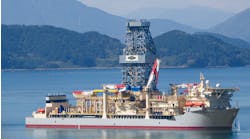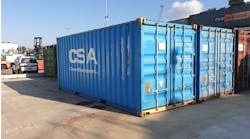The oil and gas industry is increasingly beset with regulations. In the area of use and discharge of chemicals, the regulatory landscape is especially fraught with changing rules and tightening of legislation in many developing and mature regions. The strictest regulations are observed in the North Sea OSPAR (Oslo and Paris Convention) area. Here, a “clearing house” approach is observed, whereby chemicals have to be tested for ecotoxicity and persistence and the data submitted to member state regulators so that chemicals can be approved or disapproved.
In contrast, an “end of pipe” approach has been adopted in the Gulf of Mexico. There is a pre-use testing requirement for some materials that are intended for use and discharge (base oil and barite), but there is no formal government approval requirement. Elsewhere, there tends to be a mixture of the North Sea and GoM styles of approach, although some countries (e.g., Australia) may examine projects on a case-by case basis. This is practical in regions with lower levels of activity, but not applicable everywhere.
If there is no regulatory framework, operators typically establish their own guidelines, to the extent that minimal global standards have been adopted on a formal or semi-formal basis. Policies can differ markedly between international oil companies and national oil companies, but increasing transparency and reporting may well give greater uniformity across the globe. Increasing stakeholder interest and the ongoing need for a license to operate mean that many operators are imposing increasingly stringent internal controls internally. As more and more national oil companies want to partner with the international oil companies, the national oil companies are changing or adopting new policies to meet their partners’ requirements.
In some areas it is difficult to determine who drives regulatory developments. The regulators clearly have to respond to government policy in rulemaking efforts. Government policy is in turn driven by in-country political pressures, or external international agreements conventions and protocols. Operators moving into offshore areas where existing regulations are limited can set a precedent for use of best available technology and therefore spur adoption of new regulations. Also, in developing new products chemical suppliers may also cause shifts in regulations.
When considering regulatory development, it is useful to consider a green continuum, with on one hand fewer regulations and less concern for the environment, and on the other hand a highly regulated zero-discharge scenario. Consider where a country or operator is on the green continuum and it is easy to see where it lies in comparison with peers. Similarly, the greening of industry is a gradual process. If a business wants to improve, then it needs to see where it lies. Not all projects can move directly to the greenest position, but by adopting appropriate incremental progress, the environmental aspects of a project can be improved.
Therefore, we can green our chemical portfolio by moving to a place further along the Green Continuum. For example, an alternative material may offer one or more of the following advantages:
- Is less toxic
- Is more biodegradable
- Has less potential to bioaccumulate
- Uses less packaging
- Is more sustainably produced.
Then perhaps we can regard it as “greener” than what we are using right now...
First of all we need to establish how we will demonstrate continuous improvement. We need to ask ourselves, “where are we now?” Are we even at a stage of basic compliance, or are we beyond compliance? How far? How far is that along the green continuum? How does that compare to our peers? Just as in any other continuous improvement process, you measure performance, set targets, and benchmark against your peers.
Simple greening of a portfolio should not ignore other important factors. For example, do more biodegradable materials stand up to temperature? Are they stable? Do less toxic materials really work? What about costs?
Dr. John Hall
Global Environmental Specialist
Halliburton
This page reflects viewpoints on the political, economic, cultural, technological, and environmental issues that shape the future of the petroleum industry. Offshore Magazine invites you to share your thoughts. Email your Beyond the Horizon manuscript to Eldon Ball at[email protected].


